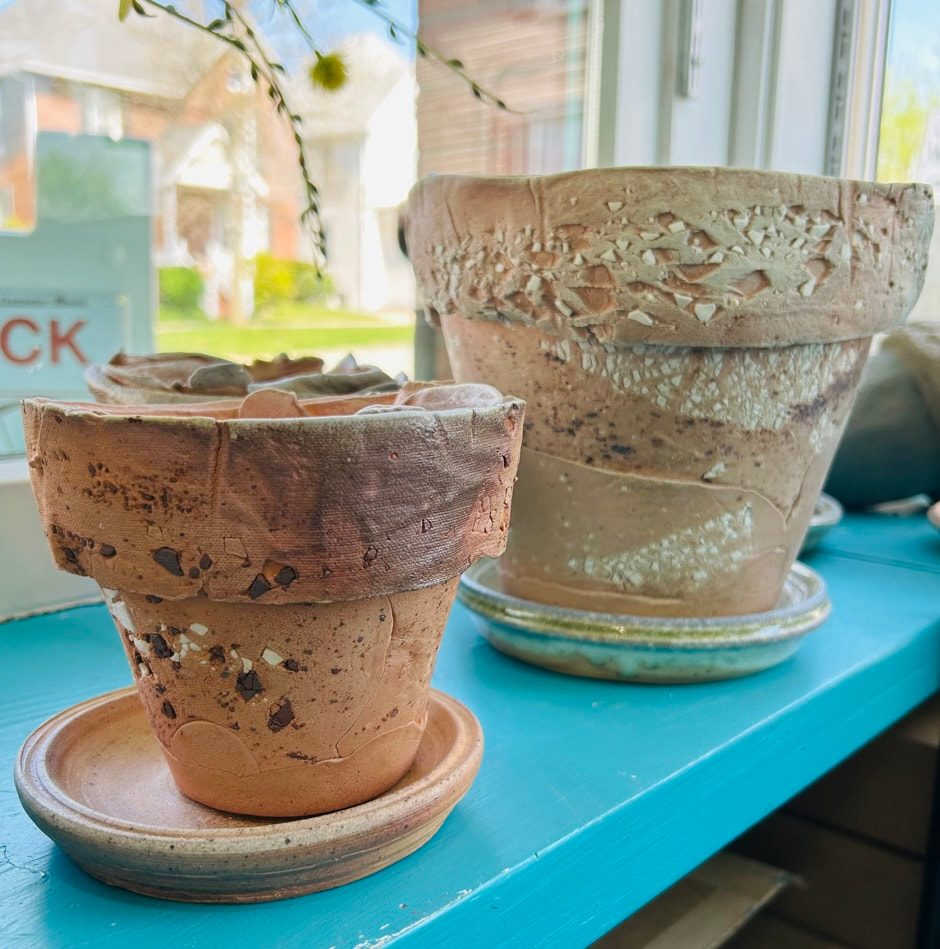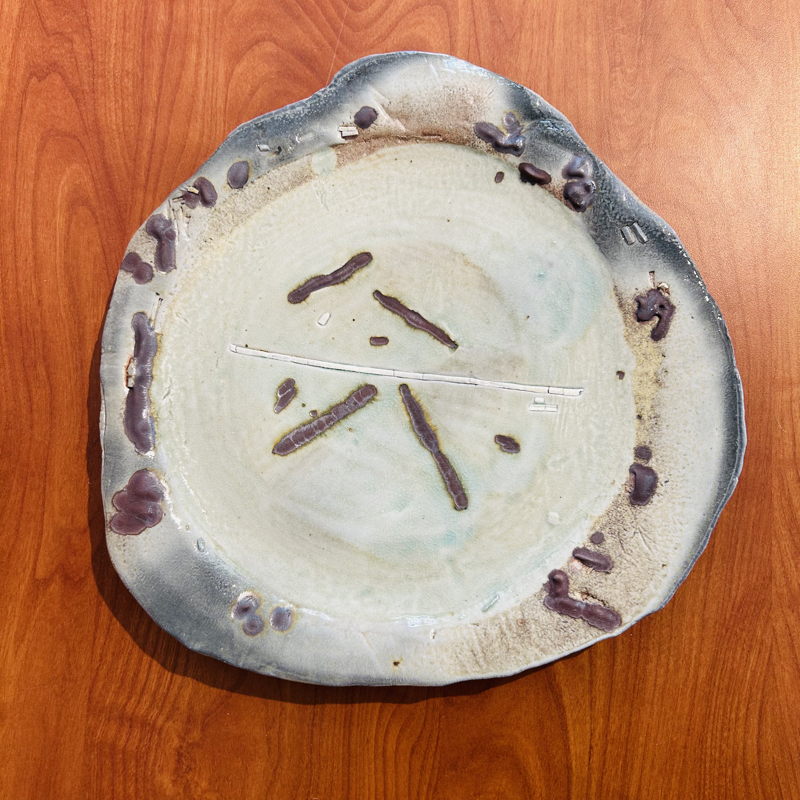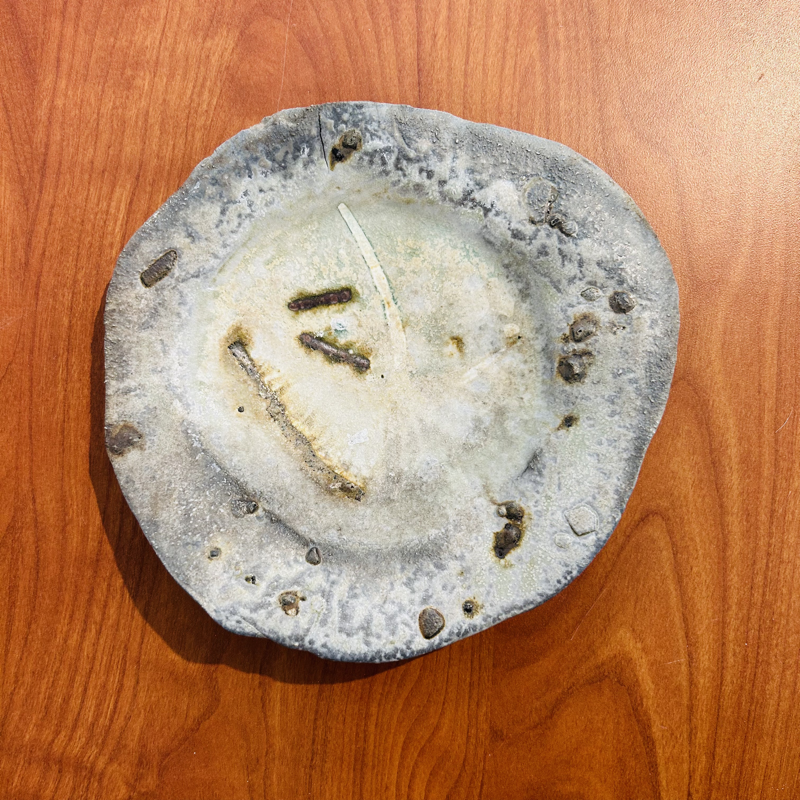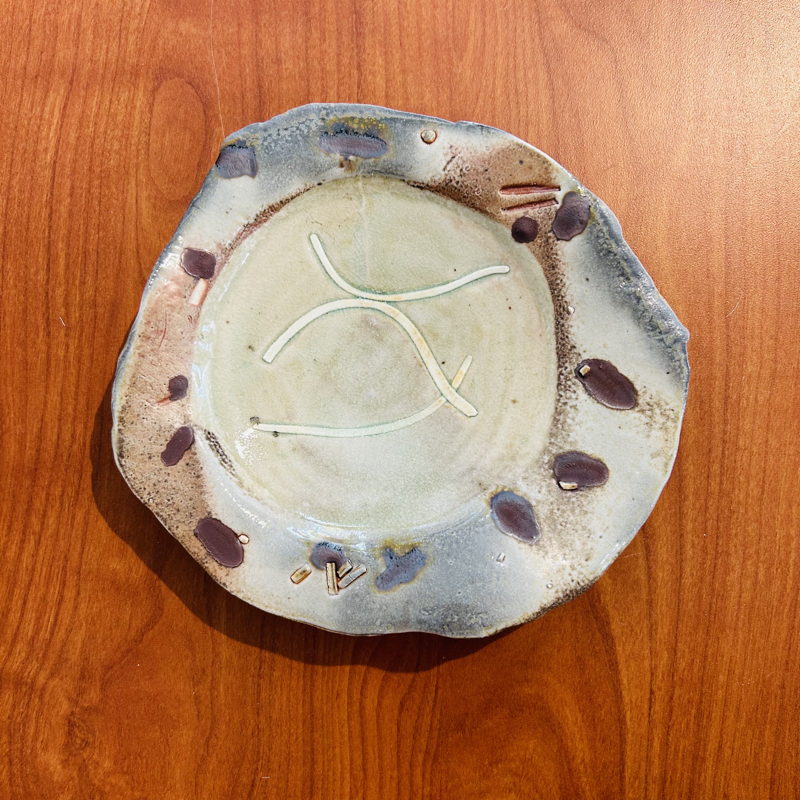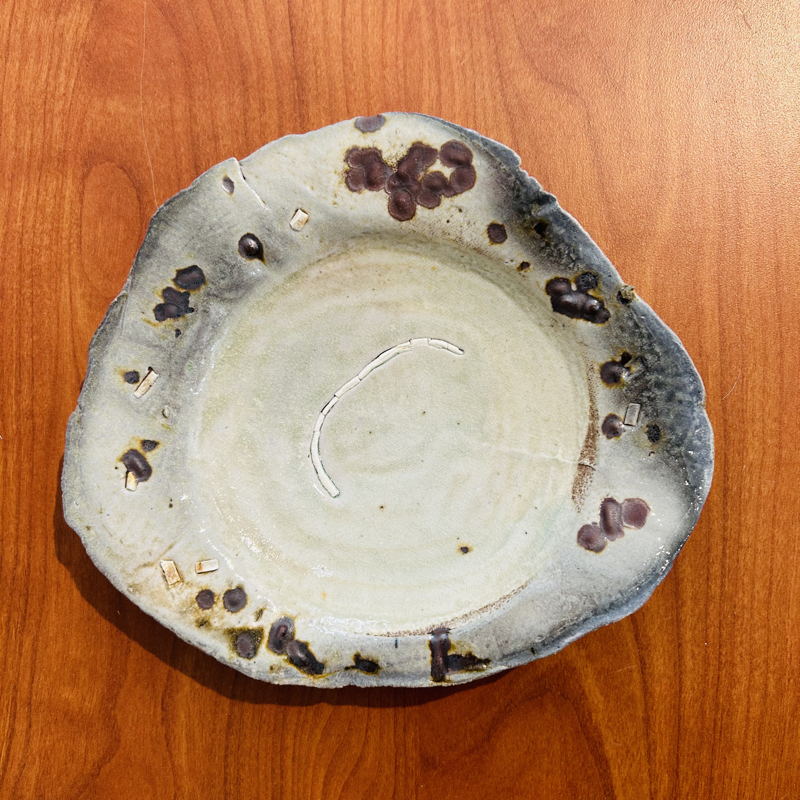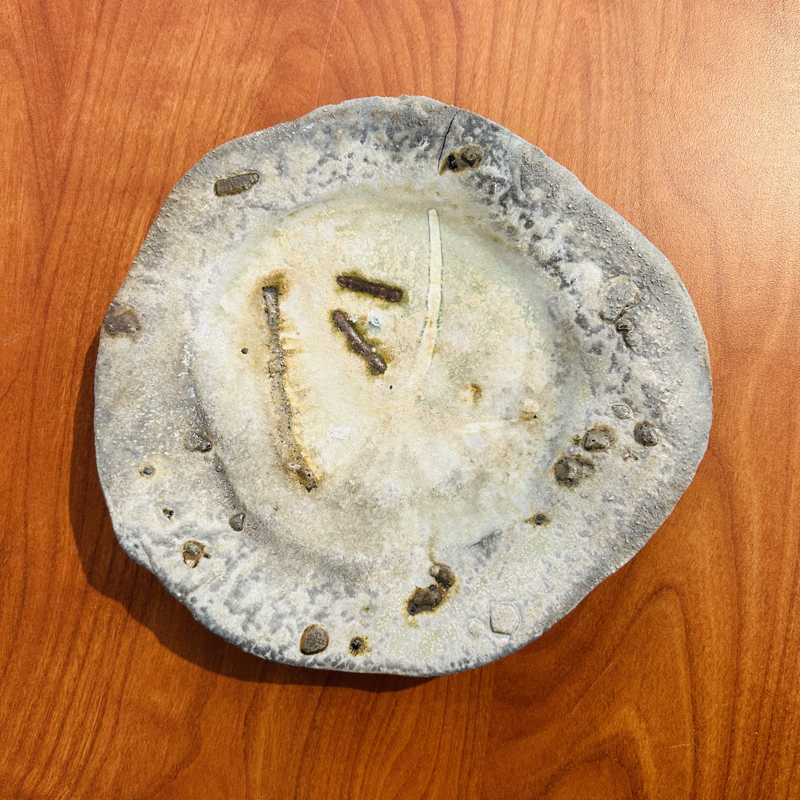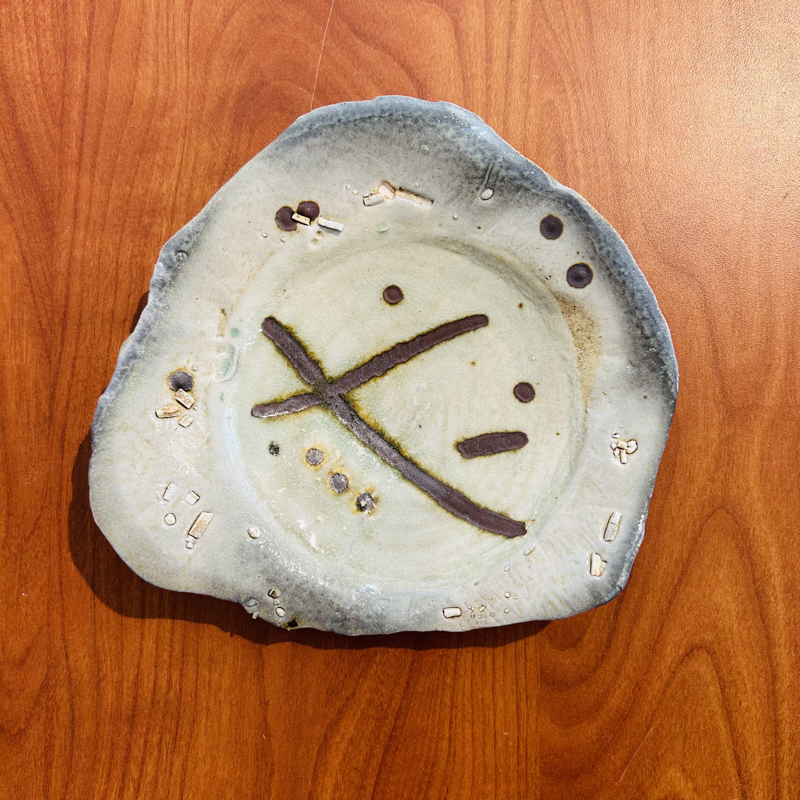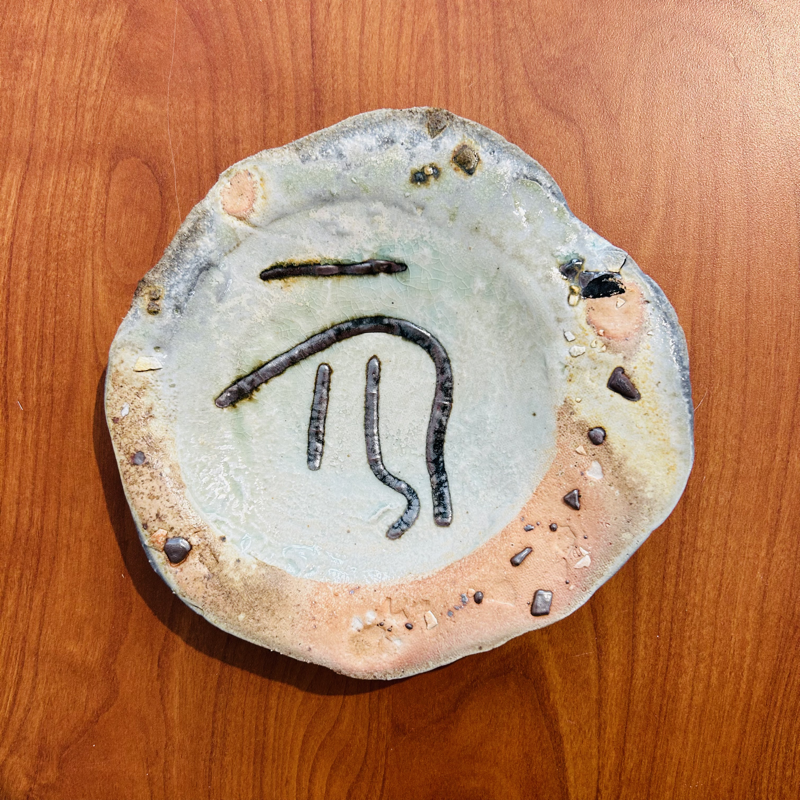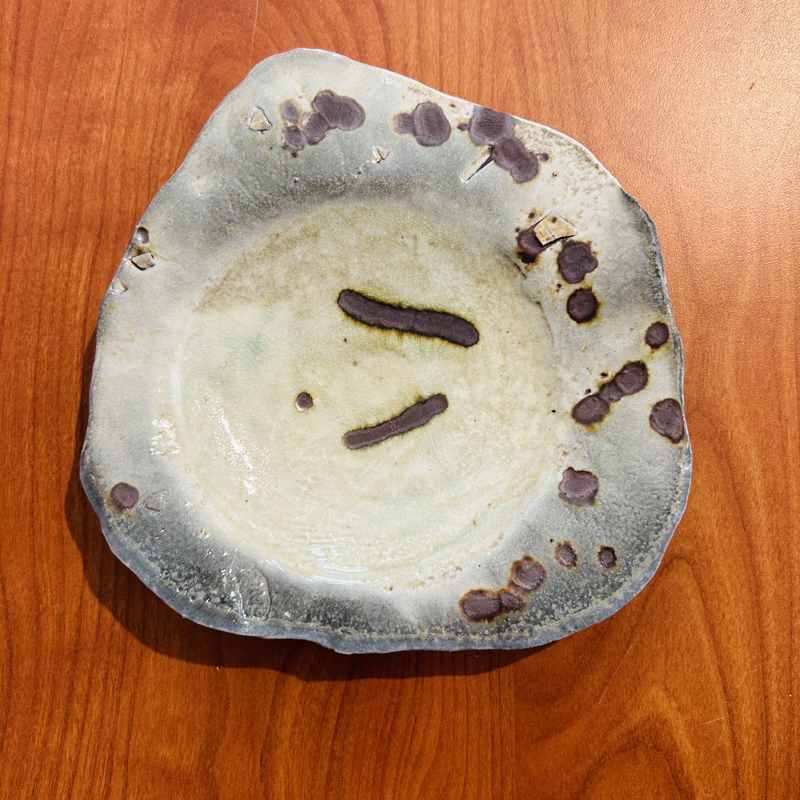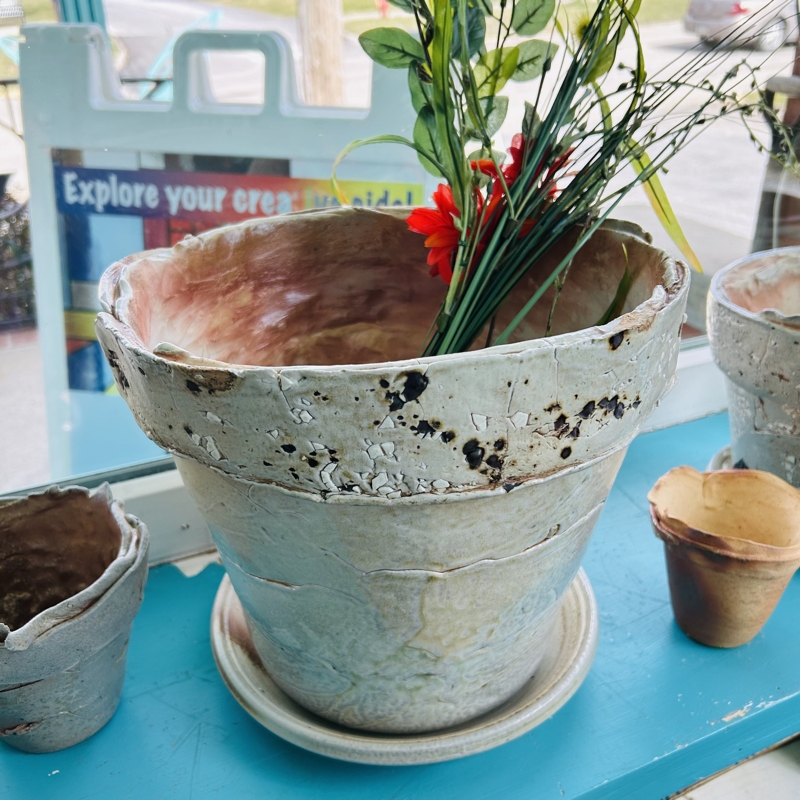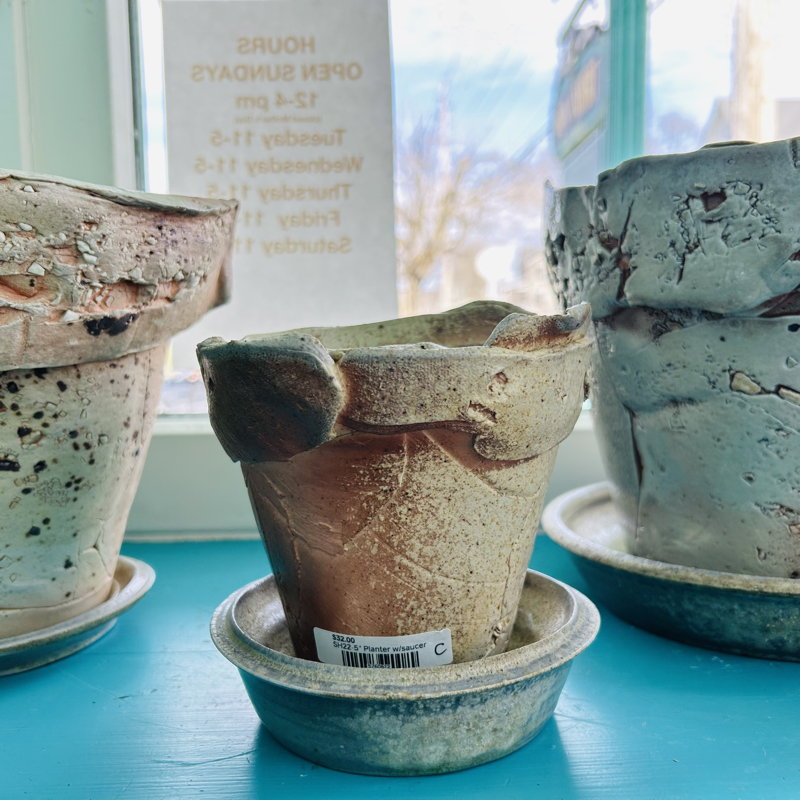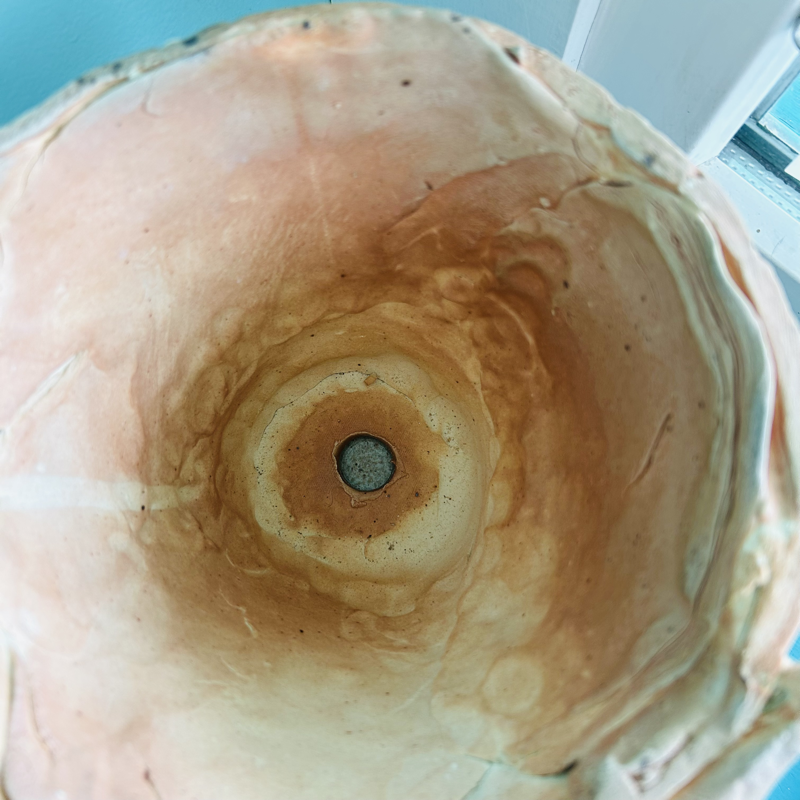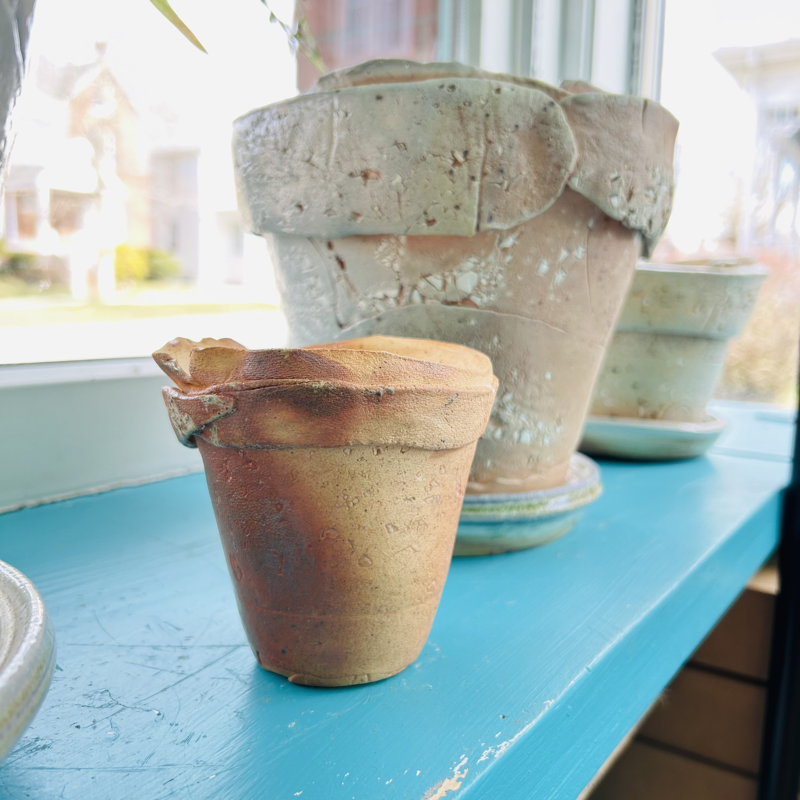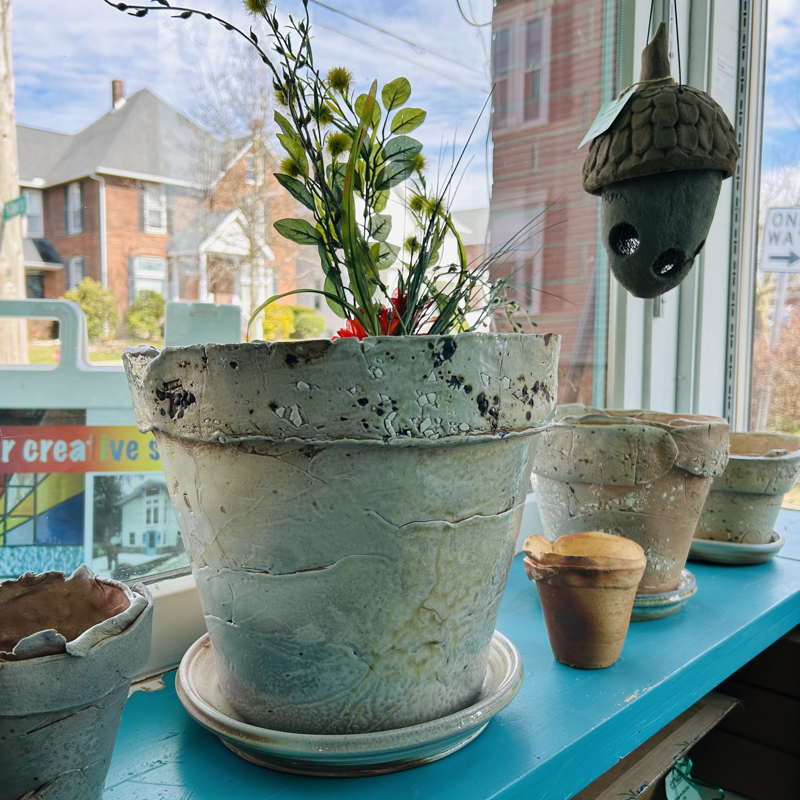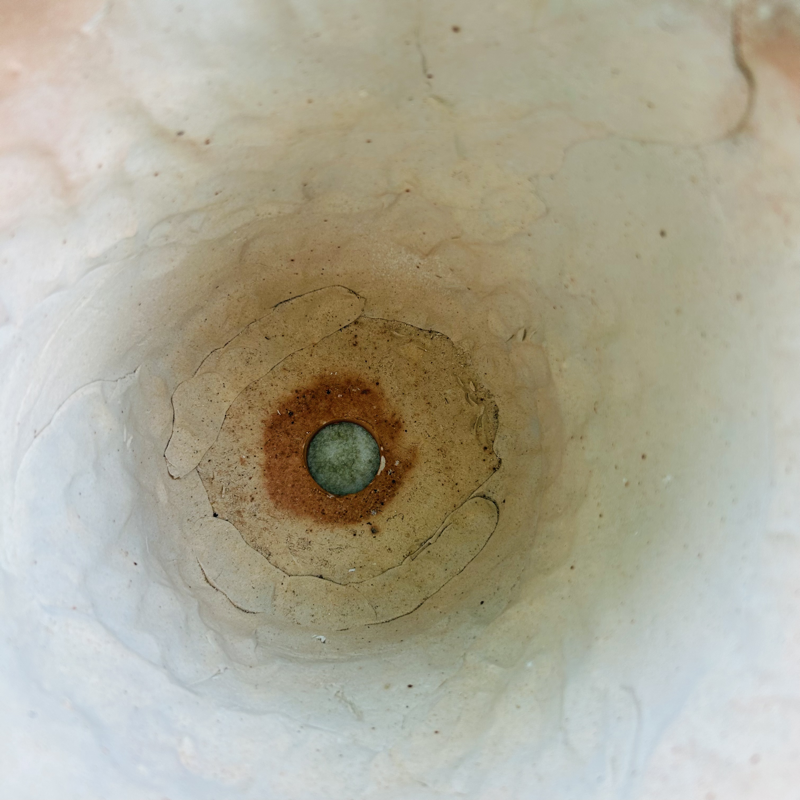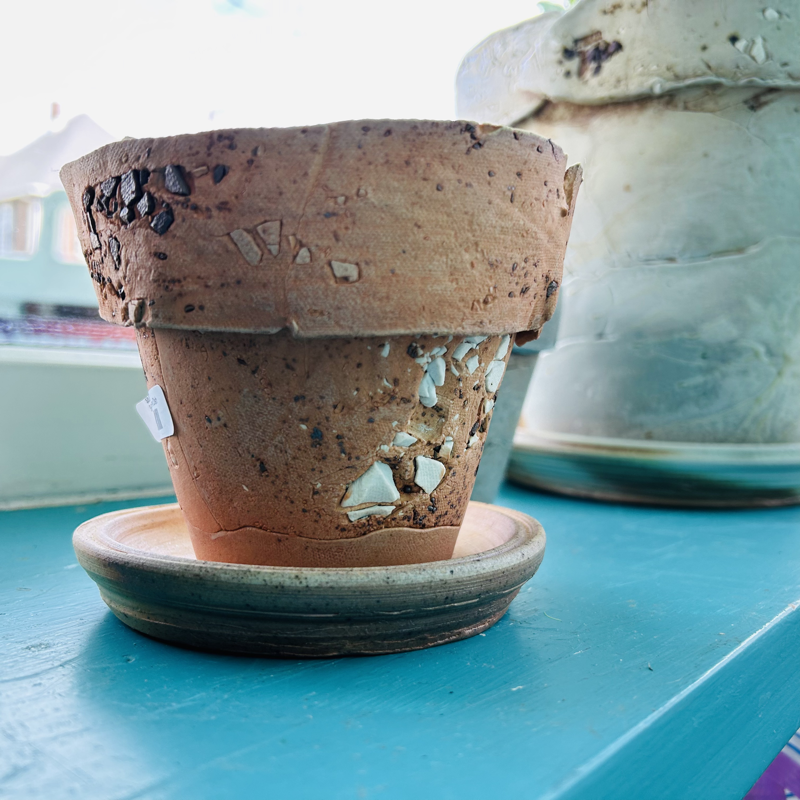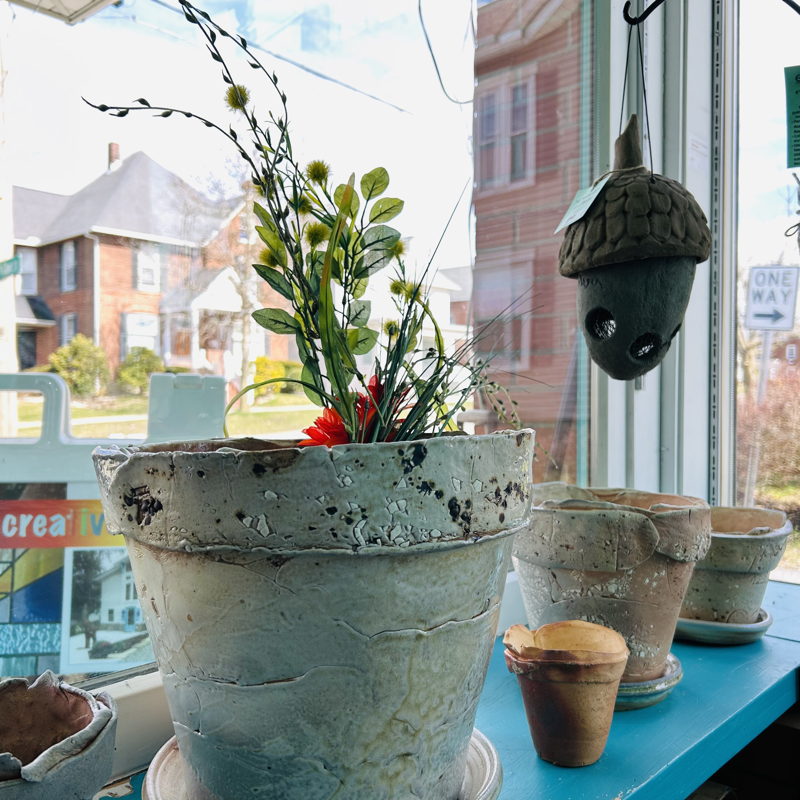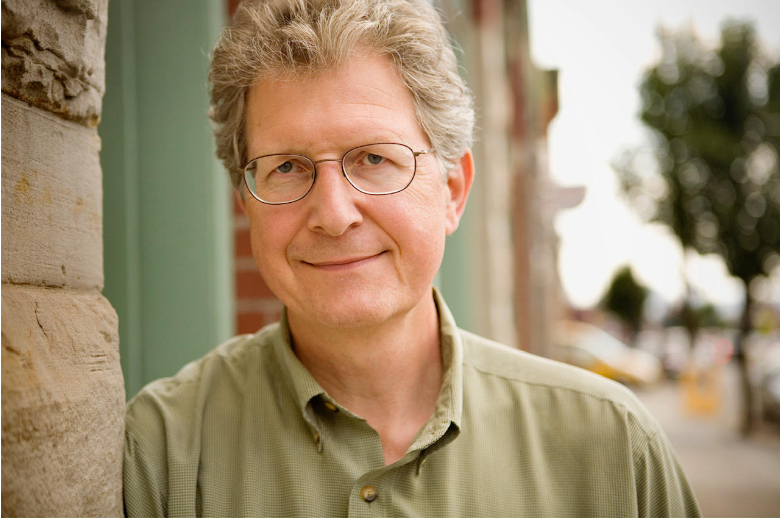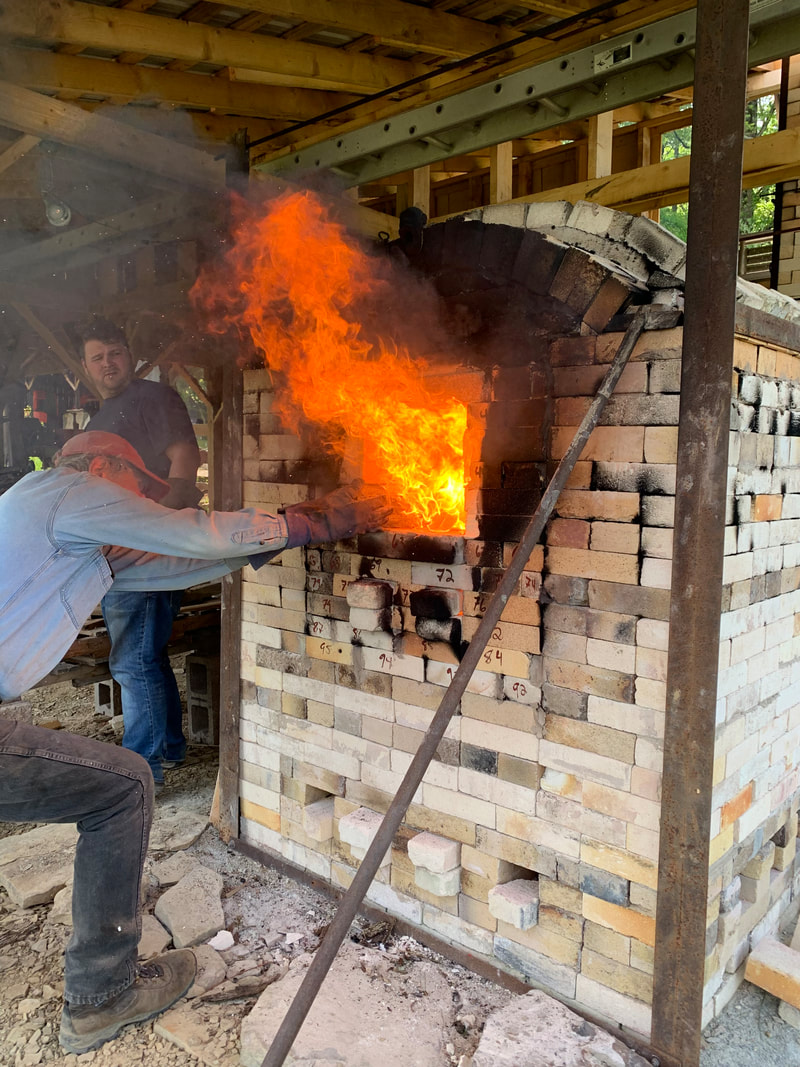About the Artist
|
I started making pottery in high school, and worked extensively in ceramics during college at Oberlin, and for a few years after. Life took a turn, and after a career hiatus, I have now returned to ceramics. I have never stopped looking and thinking about clay and fire, and I now have a studio, a wood-fired kiln, and the time to chase my vision. I also share my love of ceramics with students at Main Exhibit Gallery & Art Center!
|
"Ceramics combines the material of clay and the process of fire to create an object. In my work, I try to express the essence of each of these elements. The forms I make are simple. Spontaneity is a crucial element of each piece. The form is fixed, but the patterns formed by the clay and the fire work to create a unique expression of material and process. As a result, I don’t know until I unpack the kiln how each piece has turned out. Some pieces do not measure up to my artistic standards and are destroyed, a very few are reserved for a gallery show, and the rest are offered as expressions of my vision in a functional form. Made to be used as well as admired. A clay flowerpot is familiar to everyone, it’s shape classic, it’s purpose straightforward. I use this form as a starting place, and then try to have each piece fully express both material and process. Clay is earth, plastic, moving, then drying and cracking. The patterns on the works reflect the tectonic plates of the earth merging and colliding, with smaller shattered elements carried along and deformed by the forces that combine the larger slab into the final form. An applied rim adds an unconfined spontaneous accent, as well as a functional reinforcement to the work. The materiality of the clay is clear, it could not be anything else. Plates are another simple form, but provide a surface for both the artist and the materials of clay and fire to express themselves. By altering the form, either intentionally or spontaneously, the fire is given further opportunities to imprint it’s mark. Fire converts the clay into pottery, and adds its own unique elements to each piece. I fire these pieces in a wood burning kiln up to 2400 degrees over a period of at least 36 hours, giving ample time for the fire to leave its marks on each piece. The ash deposits form a gray glaze on the sides of the pots exposed to the flame, and a heavy reduction creates a wide palate of additional colors. I want each piece to bear witness to its transformation, sothat the viewer can see the effects of the fire." ~ Steve Hasley |
Address
301 West Main St.
Ligonier, PA 15658 Visit us in historic Ligonier!
|
|

